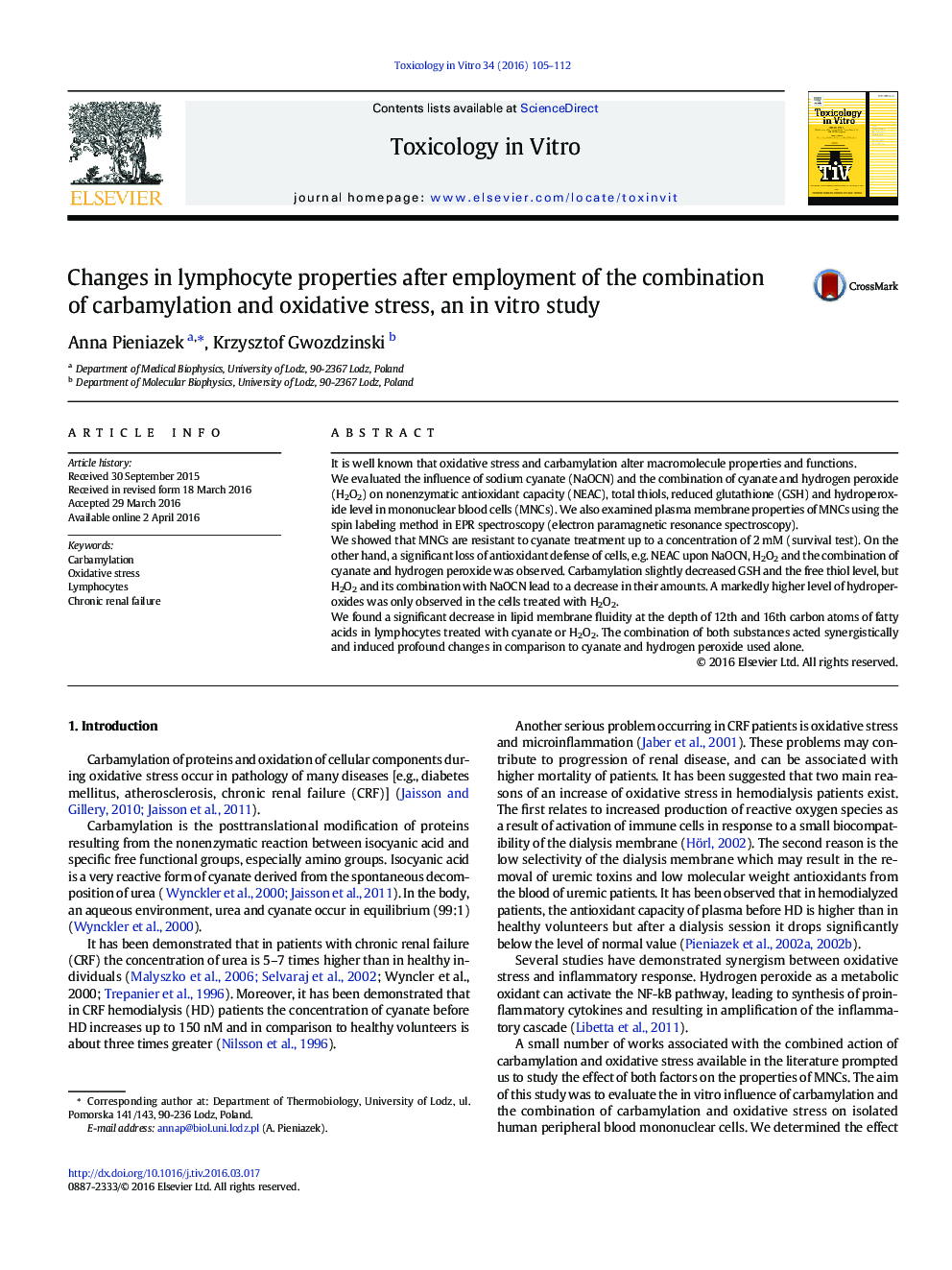| Article ID | Journal | Published Year | Pages | File Type |
|---|---|---|---|---|
| 5861073 | Toxicology in Vitro | 2016 | 8 Pages |
â¢Mononuclear blood cells are resistant to cyanate up to a concentration of 2 mM.â¢Carbamylation and oxidation decrease the nonenzymatic antioxidant capacity of cells.â¢Oxidation after carbamylation enhanced the effect induced by cyanate in the investigated cells.
It is well known that oxidative stress and carbamylation alter macromolecule properties and functions.We evaluated the influence of sodium cyanate (NaOCN) and the combination of cyanate and hydrogen peroxide (H2O2) on nonenzymatic antioxidant capacity (NEAC), total thiols, reduced glutathione (GSH) and hydroperoxide level in mononuclear blood cells (MNCs). We also examined plasma membrane properties of MNCs using the spin labeling method in EPR spectroscopy (electron paramagnetic resonance spectroscopy).We showed that MNCs are resistant to cyanate treatment up to a concentration of 2Â mM (survival test). On the other hand, a significant loss of antioxidant defense of cells, e.g. NEAC upon NaOCN, H2O2 and the combination of cyanate and hydrogen peroxide was observed. Carbamylation slightly decreased GSH and the free thiol level, but H2O2 and its combination with NaOCN lead to a decrease in their amounts. A markedly higher level of hydroperoxides was only observed in the cells treated with H2O2.We found a significant decrease in lipid membrane fluidity at the depth of 12th and 16th carbon atoms of fatty acids in lymphocytes treated with cyanate or H2O2. The combination of both substances acted synergistically and induced profound changes in comparison to cyanate and hydrogen peroxide used alone.
